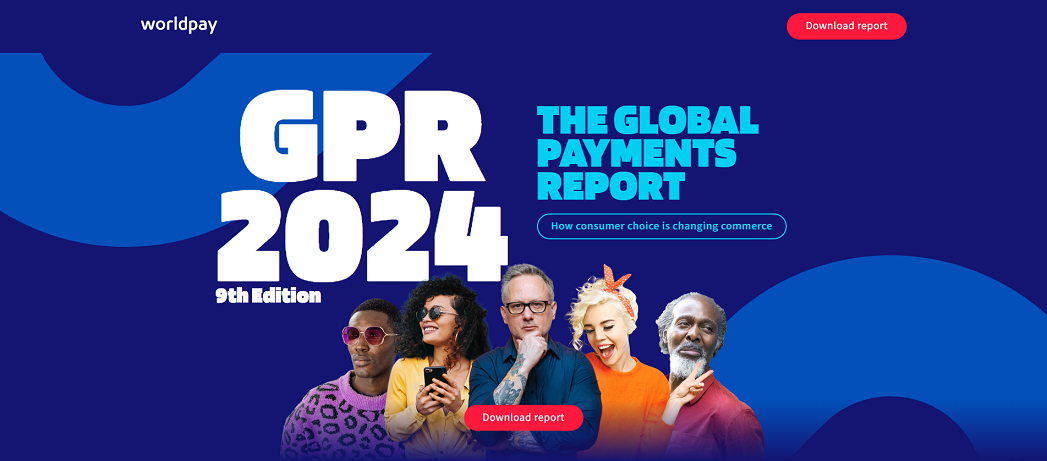
By 2027, digital wallets are projected to account for more than $25 trillion in global transaction value, or 49% of all sales online and at POS combined.
The continued rise of digital wallets is heralding a golden age in payments, marked by the swift adoption of new technologies and driven by consumer preference according to new research in the Global Payments Report 2024 from Worldpay®. The ubiquitous acceptance of digital wallets is enabling greater consumer choice and control in this era of payments innovation. According to the findings, digital wallets accounted for $13.9 trillion in global transaction value in 2023, representing half of all online and 30% of consumer spend at point-of-sale (POS).
The findings suggest that digital wallet use is set for continued growth at POS and online across the globe. By 2027, digital wallets are projected to account for more than $25 trillion in global transaction value, or 49% of all sales online and at POS combined.[1] Ease of use, accessibility and consumer trust, enabled by enhanced security, have driven this unprecedented growth.
While digital wallets emerged in the late the 1990s, steadily gaining in popularity from the mid-2000s, it was the 2020 pandemic that provided the tipping point for global adoption. Now established as a ‘go-to’ payment type around the world, the maturity of the technology is giving consumers the confidence to try new ways to pay. However, the ways in which consumers choose to fund digital wallets varies by region and is influenced by loyalty towards established payments types.
In markets where credit and debit cards already had strong consumer attachment, the data suggests consumers remain loyal to these cards, choosing to connect them to their digital wallets. For example, in the U.S., credit and debit cards fund 65% of digital wallets in the market.
“It’s important to understand that digital wallets are merely a mechanism for transmitting a payment, and so it is really magnifying trends we were seeing globally around the shift away from cash to other payment types, such as credit and debit cards or account-to-account (A2A),” said Gabriel de Montessus, Head of Global Enterprise at Worldpay. “For example, in places like Brazil and India that have until recently been cash heavy economies, instant payment services like Brazil’s Pix are being tapped into for their convenience, speed and reliability. As businesses and governments look to accelerate commerce and streamline payments, we will see more investment in real-time payments infrastructures globally, which will likely further accelerate digital wallet adoption.”
Trust in Payment Method Bolsters Adoption Globally:
. New payments methods like A2A via instant payments systems are thriving in regions where governments have invested and shown support in developing the underlying infrastructure.
. In Brazil, the report found that A2A is projected to account for 50% of e-commerce payment value by 2027.
. In India, digital wallets funded by A2A accounted for more than half of all POS and e-commerce value according to the report.
. In the Netherlands, A2A accounted for 64% of e-commerce transaction value in 2023.
“The remarkable rate of digital wallet adoption tells us a lot about the power of consumer preference when it comes to how people shop,” added Montessus. “Embedding payments like digital wallets into the purchasing experience has solved many of the high-friction moments of online checkout while also making payment in stores as simple as the tap of a device. The profound ease of use is only bolstered when we consider how digital wallets are helping standardize the experience across peoples’ preferred payments methods – whether that be card, A2A or even Buy Now, Pay Later. Now more than ever, there is a clear signal that stakeholders across the payments ecosystem need to work together to offer payments freedom to consumers and merchants to speed up innovation and unlock greater value for all.”
___________
The Global Payments Report 2024 offers a snapshot of today’s payments landscape: globally, by region and in 40 select markets. The report tracks consumer payments when shopping online and at the point of sale, identifies key payment trends, and projects future scenarios for payment method shares as well as market size. The report’s data was collected using a survey of 48,000 consumers, secondary research, and extensive validation by payments experts from each region; the complete research methodology is published as an appendix to the report. Published continuously since 2015, the Global Payments Report is an industry benchmark used by merchants, financial institutions, press and researchers around the world.
To download the complete copy of the report, visit: https://worldpay.globalpaymentsreport.com/
Banking 4.0 – „how was the experience for you”
„To be honest I think that Sinaia, your conference, is much better then Davos.”
Many more interesting quotes in the video below: